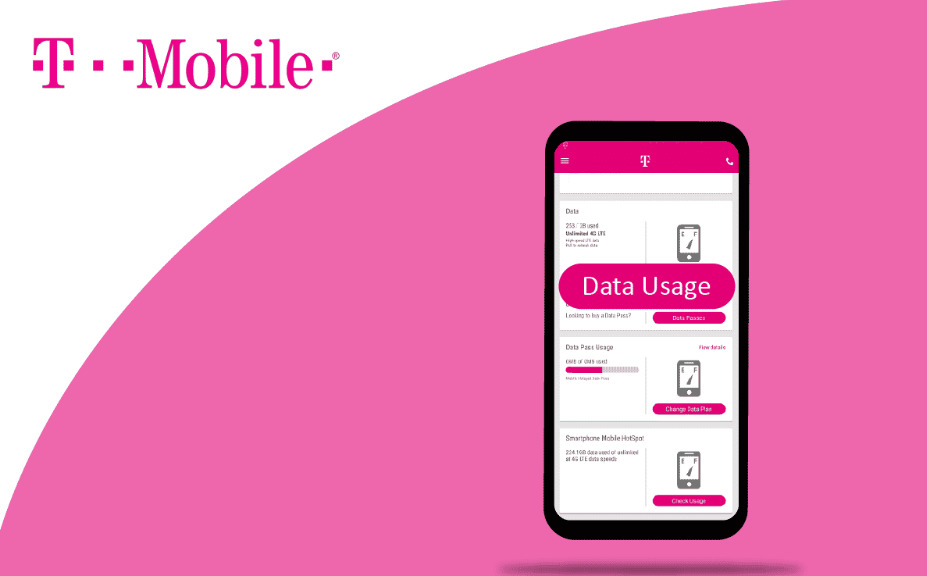The privacy of your digital communication is a serious concern for anyone on a shared wireless plan. If you are asking, “Can you see actual text messages on T-Mobile bill?”, the answer is a definitive No.
T-Mobile does not record, store, or display the content of any text message (SMS or MMS) on your billing statement or in online usage logs. This policy protects user privacy.
However, it is critical to understand the distinction: while the content is private, the primary account holder can access all message metadata—meaning they can see who you messaged and when you did it.
This guide clarifies what T-Mobile records, what remains completely private, and provides actionable steps for ensuring your conversations are never logged.

What the T-Mobile Bill Actually Shows (Metadata)
The detailed bill or usage log that the Primary Account Holder (PAH) can download or view online reveals significant information about message activity, even if the content is hidden.
The record for every standard text message (SMS) and picture message (MMS) sent or received includes:
| Log Detail | Visibility on T-Mobile Bill | Why it is Visible |
| Message Content | NO (Not stored by T-Mobile) | T-Mobile, like most major carriers, deletes the conversation content immediately after successful delivery. |
| Phone Number (Sent To/From) | YES | This is the required metadata for routing the message and recording usage for billing purposes. |
| Date and Time Stamp | YES | The exact date and time the message passed through the T-Mobile network are logged. |
| Message Type | YES | Whether the event was an incoming/outgoing text (TXT), a picture message (MMS), or a system alert (e.g., a code like “128”). |
| Data Usage (Total) | YES | The total amount of data used by the line for the billing cycle is visible, though specific URLs or endpoints are not. |
How to Access the Metadata Log
The Primary Account Holder (PAH) can access this detail online:
- Log in to My T-Mobile or the T-Life
- Navigate to the Usage
- Select the desired line and choose to view or Download usage records (often available for the previous 12 months).
How to Ensure Your Conversations Remain Completely Private
If you are concerned about any visibility whatsoever—even the number, date, and time—you must avoid using the carrier’s native SMS/MMS network.
- Use Data-Based Messaging (The Safest Route)
The golden rule for privacy is to use apps that route messages over internet data (either Wi-Fi or cellular data) rather than the carrier’s specialized SMS network.
- iMessage (iPhone to iPhone): Messages sent between iPhones (blue bubbles) are routed as data and are often end-to-end encrypted. They will not appear as individual entries on the T-Mobile usage log. Only a portion of the line’s total data usage will be recorded.
- Encrypted Third-Party Apps: Use apps like WhatsApp, Signal, or Telegram. These services are strictly data-based and encrypted. T-Mobile only sees generic data usage, with zero visibility into the recipient, time stamp, or content of the individual messages.
- RCS Messaging (Android to Android): Similar to iMessage, Rich Communication Services (RCS) messaging between modern Android phones uses data and encryption, and those messages do not appear on the T-Mobile bill.
- Avoid “Send as SMS” (iPhone Users)
If an iPhone is unable to connect to iMessage, it often defaults to sending the message as a standard, loggable SMS (green bubble). To maintain privacy, ensure this setting is toggled off:
- Go to Settings > Messages.
- Toggle “Send as SMS” to the Off This prevents the phone from sending standard, traceable texts if iMessage is unavailable.
- Be Aware of T-Mobile DIGITS
T-Mobile’s DIGITS service allows you to use your number on multiple devices (like a tablet or PC). If the Primary Account Holder were to activate a line on the DIGITS app, they could potentially view the messages.
- Security Safeguard: Fortunately, T-Mobile has a security measure: setting up DIGITS requires the line user to verify the setup with a one-time PIN sent to their physical phone. If someone tries to set up DIGITS on your line without your permission, your phone will receive a text alert notifying you of the attempt.
FAQ (Frequently Asked Questions)
How far back do the T-Mobile message logs go?
The Primary Account Holder can typically access and download detailed usage records, including message metadata, for up to 12 months (one year) through the T-Mobile website.
If I use a messaging app, can the account holder see who I talk to?
No. If you use apps like WhatsApp, Signal, or even iMessage (sending to another iPhone), the carrier only sees the total amount of data used, but they cannot see what app generated the data, who the messages were sent to, or when the messages were sent.
Can T-Mobile customer service see the text content?
No. T-Mobile customer service representatives have the same view of the bill as the Primary Account Holder—they can see the number, date, and time of the SMS/MMS, but they cannot see the actual content. T-Mobile does not store this sensitive conversational data.


